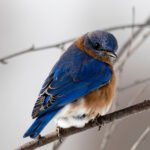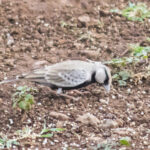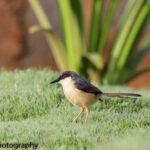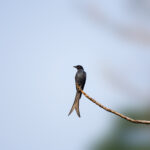SAPPHIRE FLYCATCHER
FICEDULA SAPPHIRA
Table of Contents
- Basic
- Introduction
- Identity of the Sapphire Flycatcher
- 2.1 Breeding Male
- 2.2 Non-breeding and Immature Male
- 2.3 Female
- Habitat and Habits
- Dietary Preferences
- Vocalizations of the Sapphire Flycatcher
- Geographic Distribution
- Conservation Status
- The Role of Sapphire Flycatchers in Ecosystems
- Breeding and Reproduction
- Threats and Challenges
- Sapphire Flycatcher’s Significance in Culture
- Conservation Efforts
- Conclusion
- Frequently Asked Questions
Basic
BASIC:
Size:
11-11 cm
4-4 Inch
Primary color: blue
Secondary color: orange
(Bird may have more colors)
LOCAL NAMES:
Gujarati: અધરંગ
Malayalam: നീലക്കുരുവി
Marathi: निलीमा
Sanskrit: नील मक्षाद
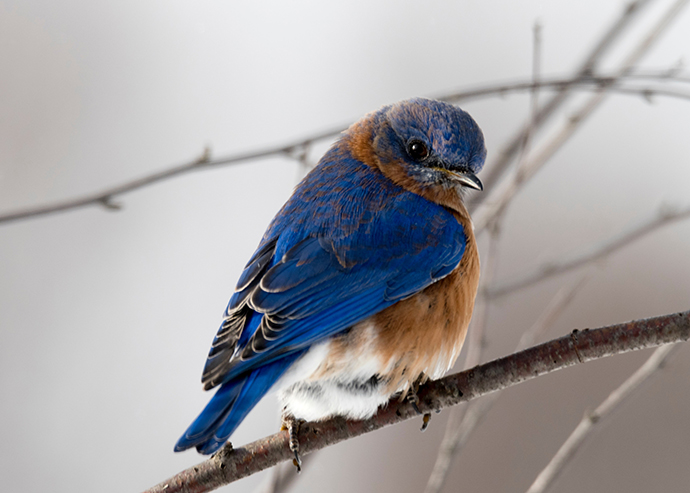
1. Introduction
The world of avian wonders is adorned with a multitude of captivating species, each with its unique charm and characteristics. In this comprehensive article, we delve into the enchanting realm of the Sapphire Flycatcher (Ficedula sapphira), a bird that has long intrigued ornithologists and bird enthusiasts alike. From its striking physical attributes to its vital role in ecosystems, we will explore every facet of this remarkable creature.
2. Identity of the Sapphire Flycatcher
2.1 Breeding Male
The Sapphire Flycatcher’s breeding male boasts a vibrant and distinctive appearance. Its upperparts shimmer in a brilliant blue, captivating the beholder’s gaze. The crown and rump glisten with the same azure hue, adding to its allure. The throat and the center of the breast are adorned in a striking shade of orange, creating a stunning contrast against the blue. The lower part of the body, including the belly and undertail-coverts, is pure white. This dazzling combination of colors makes the breeding male a true gem of the avian world.
2.2 Non-breeding and Immature Male
Outside the breeding season, the male Sapphire Flycatcher undergoes a transformation. Its head and mantle turn to a subdued brown, while the breast takes on brownish tones. This change in plumage serves a purpose, providing camouflage during times when the bird needs to blend into its surroundings.
2.3 Female
The female Sapphire Flycatcher exhibits a more subtle yet captivating appearance. Its upperparts are a gentle olive-brown, offering effective camouflage amidst the foliage. The throat and breast are adorned with a warm shade of orange, and a rufous rump and tail complete its elegant ensemble.
3. Habitat and Habits
The Sapphire Flycatcher finds its sanctuary in moist evergreen broadleaved forests. This bird’s natural habitat primarily consists of subtropical or tropical moist montane forests. These lush environments provide the necessary cover and resources for the species to thrive.
4. Dietary Preferences
While the Sapphire Flycatcher’s diet isn’t extensively documented, it is known to include small invertebrates and larvae. This bird is often observed foraging alone or in pairs, meticulously hunting for its preferred prey.
5. Vocalizations of the Sapphire Flycatcher
The avian world is renowned for its symphony of songs and calls, and the Sapphire Flycatcher is no exception. Its calls are characterized by a distinctive low tit-it-it rattle and a dry rattled call trrrt, adding to the auditory beauty of the forested landscapes it inhabits.
6. Geographic Distribution
The Sapphire Flycatcher’s range extends across several Asian countries, including Bangladesh, Bhutan, China, India, Laos, Myanmar, Nepal, Thailand, and Vietnam. Its presence in these regions enriches the biodiversity and avian diversity of each location.
7. Conservation Status
The conservation status of the Sapphire Flycatcher is of paramount concern. As with many avian species, it faces various threats that jeopardize its survival. Factors such as habitat loss, climate change, and illegal wildlife trade pose significant challenges to its long-term existence.
8. The Role of Sapphire Flycatchers in Ecosystems
Sapphire Flycatchers play a crucial role in the ecosystems they inhabit. As insectivorous birds, they help regulate insect populations, contributing to the overall health of the ecosystem. Their presence also serves as an indicator of the ecological well-being of their habitats.
9. Breeding and Reproduction
The breeding behavior of the Sapphire Flycatcher is a subject of interest among ornithologists. These birds are known to engage in courtship displays, and their nesting habits are equally fascinating. Further research into their reproductive patterns is essential for their conservation.
10. Threats and Challenges
The Sapphire Flycatcher faces a myriad of threats in the modern world. Deforestation and habitat degradation are pressing concerns, as they reduce the availability of suitable habitats. Additionally, the illegal pet trade poses a significant threat, as these beautiful birds are coveted by collectors.
11. Sapphire Flycatcher’s Significance in Culture
Throughout history, birds have held a special place in human culture and mythology. The Sapphire Flycatcher, with its striking appearance and mysterious habits, has likely inspired stories and traditions in the regions it inhabits. Exploring its cultural significance adds depth to our understanding of this bird.
12. Conservation Efforts
Conservation organizations and passionate individuals are working tirelessly to protect the Sapphire Flycatcher and its habitat. Initiatives range from habitat restoration to educational campaigns aimed at raising awareness about the importance of preserving this species.
13. Conclusion
In conclusion, the Sapphire Flycatcher is a marvel of the avian world, captivating all who encounter it. Its stunning appearance, enigmatic behaviors, and ecological significance make it a species worth cherishing and protecting. As we strive to safeguard our planet’s biodiversity, the Sapphire Flycatcher serves as a poignant reminder of the wonders of the natural world.
14. Frequently Asked Questions
- What is the scientific name of the Sapphire Flycatcher?The scientific name of the Sapphire Flycatcher is Ficedula sapphira.
- Where can the Sapphire Flycatcher be found?The Sapphire Flycatcher is found in several Asian countries, including Bangladesh, Bhutan, China, India, Laos, Myanmar, Nepal, Thailand, and Vietnam.
- What is the significance of the Sapphire Flycatcher in ecosystems?Sapphire Flycatchers play a vital role in regulating insect populations in their habitats, contributing to the overall ecological balance.
- What are the main threats to the Sapphire Flycatcher’s survival?The main threats to the Sapphire Flycatcher include habitat loss, climate change, and the illegal wildlife trade.
- How can individuals contribute to Sapphire Flycatcher conservation?Individuals can support conservation efforts by promoting awareness, donating to conservation organizations, and advocating for policies that protect the bird’s habitat.
Take this journey into the world of the Sapphire Flycatcher and discover the marvels of this magnificent bird.

